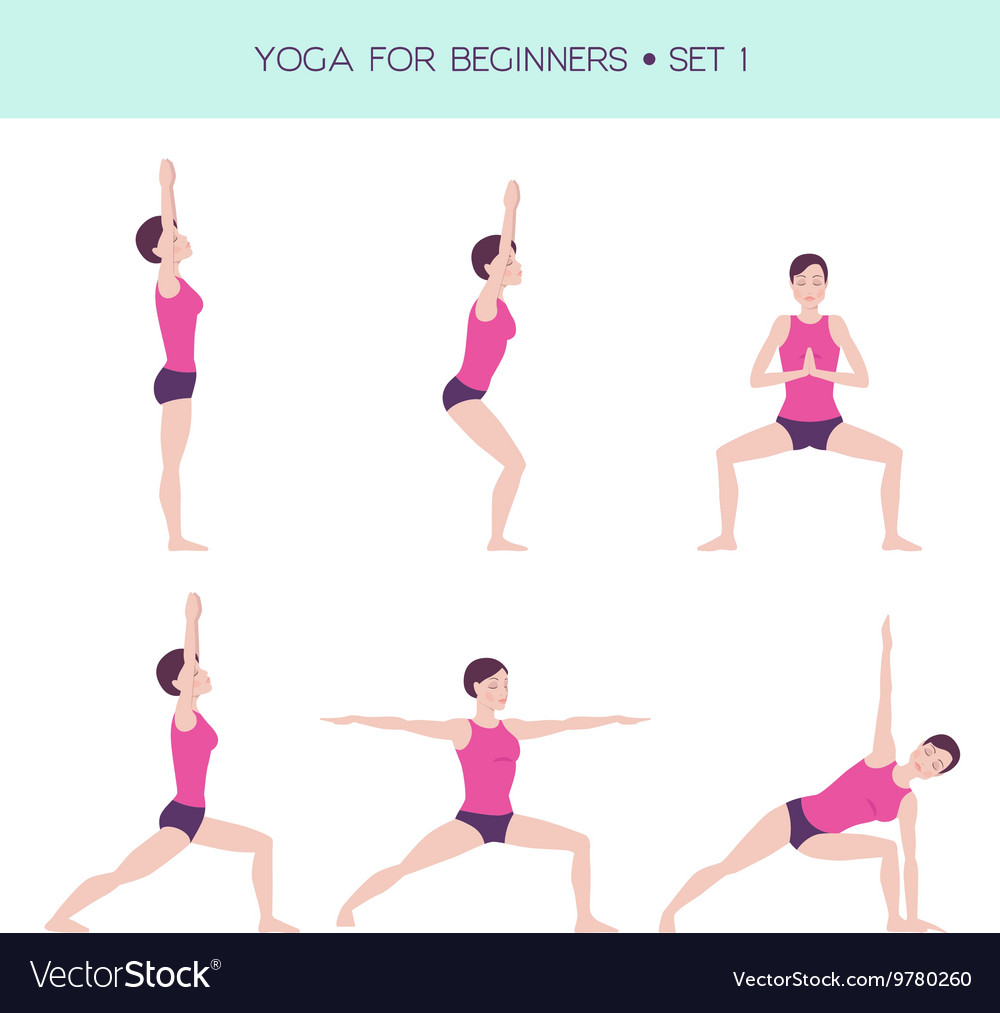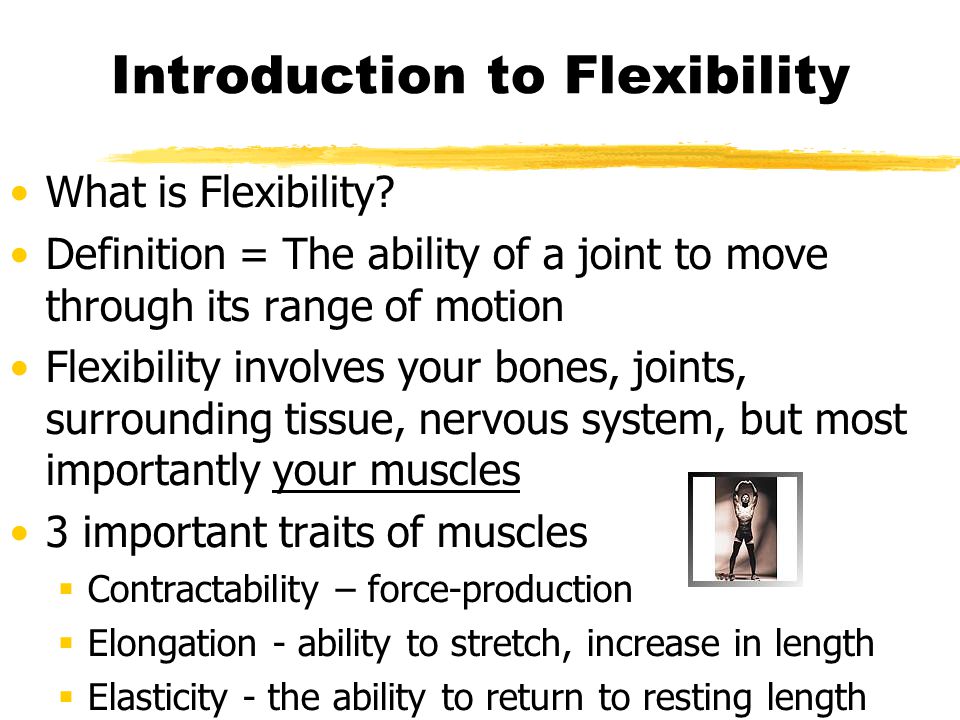
Yoga is an excellent way of increasing flexibility, particularly in the hips, back, and legs. This pose increases blood flow to the lower abdomen, reduces stress, and can also improve blood flow throughout the body. Place your hands on your stomach and extend your legs forward. Your arms should be under your shoulders. Now, fold your hips inwardly. This pose can be held for up to 2 minutes. You can repeat the exercise as many times as you need.
While yoga may seem like an ideal way to become flexible, the benefits of yoga stretch far beyond improving your posture. This discipline can improve your health and help you do more poses. This is why stretching is so important. Although a little time is necessary to master the poses, it's worth the extra effort and benefit. Once you reach a certain level of flexibility, you can start tackling more challenging poses.

Standing leg pose: Basically, this pose is a modified version of Downward Facing Dog, except you can extend one leg higher. Your goal is to extend your left foot along the floor, and then lift your right leg toward the ceiling. This pose can be modified by straightening or bending your knees. Standing leg pose also encourages you open your hips. To do this, lower your knees towards the ground and place your focus on your tips of your toes.
Forward bends are great for the hamstrings. This pose opens up the chest and helps stretch the hamstrings, which can be responsible for back pain. For this pose, you should be seated on the ground or on a cushion or a block. For at least 30 seconds, you can hold your left hand in your right hand and clasp it with your left. During this time, your neck and shoulder pain should subside.
The half forward bend is a great way to make your spine flexible. Stand on your hands and stretch them past your head with your fingers spread apart. Press your elbows against your knees with your arms. This will open your hips and hamstrings. If you have a strong back, you can use the strap around your instep to help you reach the full height of the stretch. You can also substitute a belt if you don't have a strap.

The Child's Pose is a very popular yoga pose and can be used in many ways. It is a relaxation pose that can help stretch the spine. It also increases flexibility in the hamstrings. It is a great choice for beginners. Start by lying flat on your back, with your legs at your sides. Next, elevate your legs 90° and cross your arms over your chest. This position will strengthen your lower back muscles.
FAQ
Is Yoga Beneficial?
Yoga has existed since ancient times. It has only recently been more popular. It is now very popular among celebrities and even ordinary people who want to look fit and healthy.
Yoga is great for strengthening your muscles and stretching them. It can help you relax and calm down.
Yoga and other forms exercise differ in that yoga is focused on breathing techniques.
For balance and flexibility, there are many poses you can do.
Do Men Need A Gym Membership?
For men, a membership to a gym is not required. However, your money will be more valuable if you join a gym.
Many gyms offer free trial memberships so you can try the facilities out before paying for anything.
You can use our gym anytime you like and it's free. You can cancel your membership as soon as you decide whether you love or hate it.
Is it true to say that protein overeating can lead to kidney stones?
Protein helps maintain healthy bone and tissue. However, too much protein can result in calcium excretion through the urine. This can lead to kidney stones.
Not everyone who eats more than 2g of protein per kilogram (2.2 lbs) of bodyweight will get kidney stones. It is possible to eat high levels of protein without developing kidney stones.
Watching your sodium intake can help prevent kidney stones. Sodium is important for maintaining the body's water balance. A high level of sodium can increase the risk of developing kidney stone.
If you have kidney stone, you might also consider reducing your protein intake. The majority of adults need protein for half their daily caloric needs. Reduce your intake of protein and you will likely lose weight.
If you do decide to eat more protein, don't go overboard. Limit your intake to 20% of your total daily protein intake.
What does milk do to men?
Consider what other uses you might have for your milk next time that you buy it. It might also help if you start drinking less coffee.
Both children and adults have been shown to benefit from milk. Milk contains nutrients like vitamin D. Calcium, potassium, phosphorous, magnesium, and other essential nutrients.
It promotes weight gain, digestion, bone strength, and aids digestion. The immune system is stronger and there are fewer illnesses in adults who consume dairy products.
Milk is also rich in lactose, so people who cannot digest this sugar easily can enjoy its benefits without experiencing stomach problems.
Instead of drinking soda or juice, drink more milk. Milk contains more calcium and vitamin D, which can strengthen your bones and teeth.
If you don’t like milk's taste, you can make your yogurt with plain low fat milk. Yogurt is an excellent alternative to milk because it is lower in calories, and contains more protein.
Yogurt also includes probiotics. These help in digestion and improve immunity.
Warm milk can help you sleep better if you have trouble falling asleep. Warm milk can relax muscles and increase serotonin levels. This will help you sleep well.
How to Build Muscles Fast
Fast muscle building is possible by eating healthy foods and regularly lifting weights.
When you're fresh and ready to do something, early morning is the best time for working out.
It is a good idea to do exercises like push-ups (pushes), bench presses (squats), and so on.
Try different weight training routines, and don't forget to drink plenty of water throughout the day.
Is Cardio Better Than Strength Training?
Both are equally beneficial. If you want to increase muscle mass faster, cardio is the better option.
Cardio burns more calories per hour than strength training, and also burns more fat.
Strength training helps build muscle mass. But it takes longer than cardio to accomplish this goal.
Is Cardio Exercise Good Or Bad For Your Health?
Cardiovascular exercise has many advantages. It increases blood circulation, strengthens the heart muscle, boosts stamina, aids in weight loss, and gives you more energy.
Cardiovascular exercise includes running, biking, hiking, swimming, tennis, basketball, soccer, volleyball, football, etc.
It is important to remember that cardio exercises should not be performed at high-intensity levels. This could lead to injury.
The cardiovascular exercise should only be performed if you feel good.
It is important not to push yourself beyond your limits. Otherwise, you could end up injuring yourself.
It is important to warm up before you begin any cardiovascular exercise. Gradually increase the intensity.
Always listen to your body. If you feel pain, stop doing cardio exercise immediately.
After a cardiovascular training session, it is recommended that you take some time to relax. This gives your muscles the chance to heal.
To lose weight, you should include cardiovascular exercise in your daily routine.
It is the most effective way to burn calories and reduce belly fat.
Statistics
- According to the American Heart Association, blood pressure should be checked at least once every two years, beginning at age 20. (my.clevelandclinic.org)
- 10 pounds in a month is likely during a lean bulking phase, especially for beginners. (muscleandstrength.com)
- Get free shipping and 25% off today. (healthline.com)
- By John Thompson Take a whopping 38% off a set of PowerBlock Pros. (menshealth.com)
- Cardmembers earn 5% Back at Amazon.com with a Prime Credit Card. (amazon.com)
External Links
How To
How can I exercise to burn fat?
Exercise burns calories through increased metabolism and oxygen consumption.
Exercise at a moderate intensity to safely lose weight.
These tips will help you burn fat and keep fit while exercising.
-
Cardio exercises include walking, running, swimming, cycling, running and jogging.
-
Three times per week, exercise for 30 minutes.
-
You can add strength training into your exercise routine if you're looking to lose even more weight.
-
Avoid doing intense exercises. You can build muscle and not break down muscle tissue.
-
When exercising, make sure to drink lots of water. Water flushes out toxins, and keeps your body properly hydrated.
-
Choose low-fat protein shakes after working out. Protein shakes boost energy and repair muscle tissue.
-
Eat smaller meals throughout the day, so you don't feel hungry between meals.
-
Don't skip breakfast! Skipping breakfast can make you tired and sluggish.
-
Take care of yourself mentally. Stressful situations can slow metabolism.
-
Keep a positive attitude. Studies have shown that people who are convinced they are overweight gain more weight than those who feel they look attractive.
-
Sleep enough. You will have a harder time losing weight if you do not get enough sleep.
-
Be active. Make sure you get up and move every hour.
-
Maintain a healthy diet. Eating right keeps you feeling full and satisfied longer.
-
Find relaxation methods. A tense mind doesn't allow your body to release stress hormones that break down muscle tissue.
A balanced diet is one that includes all of the essential nutrients required for growth.
Six small meals per day is better than three large meals. This allows your body time to digest what you've eaten.
Calcium is required to support strong bones. Calcium is found in dairy products like yogurt, fortified milk beverages, orange juices, cereals and bread.
Calcium comes from leafy green vegetables, beans, tofu, nuts, seeds, and cheese.
Vitamin D is essential for calcium absorption. It's found in fatty fish, egg yolk, and some fortified foods.
Vitamin E plays an important role in skin health. Vitamin E is found in vegetable oils and wheat germ oil, as well as peanuts, almonds and sunflower seeds.
Zinc is essential for healthy immunity and wound healing. Zinc can be found in seafood, legumes and meats.
Zinc deficiency could cause fatigue, nausea, vomiting, and depression.
Insulin resistance is caused by eating too much sugar, which can increase blood glucose levels. Insulin resistance can lead to weight gain.
Insulin resistance is caused by high blood levels of free-radicals. Free radicals can be molecules with unpaired electrons that cause damage to cell membranes.
Food additives, pesticides and herbicides, as well as preservatives, smoking and radiation are all sources of free radicals.
Free radical damage may lead to cancer, heart disease diabetes, arthritis, asthma and other conditions.
To prevent free radical damage, eat a healthy diet rich in antioxidants. Antioxidants protect against oxidative damage.
Vitamin C (found on citrus fruits), Beta carotene, found in carrots and sweet potatoes, spinach and broccoli, cantaloupe (found in tomatoes, mangoes and peppers), and Vitamin E (found nuts, olive oil and avocados).
Other antioxidant nutrients include selenium, copper, manganese, and zinc.
Selenium helps to protect cells against free radicals and oxidative stress. Selenium is found in Brazil nuts, tuna, liver, kidney, shrimp, cod, turkey, beef, lamb, pork, and chicken.
Copper protects the brain, eyes, lungs, and red blood cells. Copper is also found in poultry, meat, and organs.
Manganese plays an important role in bone structure. Manganese is found as a component of bone structure in brown rice (spinach, bananas), prunes, raisins and oatmeal.
Zinc is required for normal growth, reproduction and wound healing. Zn can also be found in white fish, lean cuts of meat, poultry, and eggs.